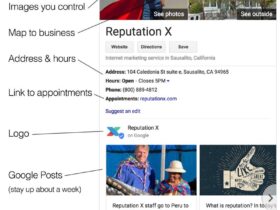As a remote worker you can lose out on so many of the relationship-building encounters and ad hoc meetings that used to be part of everyday life – of your office life – when you worked in person full time. “Good riddance!” you might be thinking. “It should be just about the work. But it’s never just about the work. Relationships and being recognized as an important team worker are important too.
If you work remotely, you can’t just knock on a senior manager’s door and say, “Let’s chat.” And you’ll be competing with ambitious coworkers who maximize their office time to their advantage and show up when the boss is in.
You’ll miss out on asking colleagues how their kids are doing, the kind of conversations that build closeness and aren’t likely to be brought up on a Zoom call or an email. You’ll lose out on the opportunity to meet senior members of different teams, or just bumping into people in the hallway.
The reality is, no matter how many check-ins you set up with your boss on your calendar, you can’t connect with your boss like you did when you were sitting one desk over.
So what can you do?
Incorporate these 3 activities into your job routine:
- Ramp up your real-time and in-person contact
As I outline in my book, “The New Brand You: How to Wow in the New World of Work,” there are two basic means of communication:
- Real-time synchronous communication: messages are shared in real-time like phone calls, face to face and video meetings.
- Asynchronous communication: messages are shared and consumed without regard to time and place like emails, texts and online forums.Asynchronous communication is the default channel for many remote workers and it’s easy to understand why. It’s so efficient to dash off an email or text. But beware. It’s the least powerful means of communication compared to connecting in-person and in real-time .
There’s nuance and connection in real-time conversations that isn’t likely to occur in emails and texts. That’s why you need to make a point of developing a personalized approach. Pick up the phone when it’s important or set up a one-to-one Zoom call. Attend meetings in the office or at employee events that offer good networking..
2. Find a work bestie
According to the Wall Street Journal, “It has never been harder, or more essential, to have a work best friend.”(June 26, 2024 https://www.wsj.com/lifestyle/workplace/it-has-never-been-harder-or-more-essential-to-have-a-work-best-friend-57d14222
There’s been an uptick in #Workbestie on Instagram and TikTok. But more than having an office friend to share what’s going on at the job, you’ll benefit in other ways. Gallup data demonstrates that work besties feel more connected in their jobs and more productive.
Yet, because many employees are working from home, fewer have a work best friend.
A Gallup survey of nearly 4,000 hybrid workers in 2022 found 17% said they had a work best friend, down from 22% in 2019. The results haven’t been good for employee morale and people can feel isolated and disengaged.
Connection is particularly important for younger people who are more eager to bring their whole selves to work. “Any corporate leader will tell you that fostering friendships at work ranks among their toughest challenges,” opined a recent cover story of Briefings Magazine, published by Korn Ferry, a management firm.
3. Launch a personal marketing plan
In the new world of work, having a visibility plan is more important than ever. That’s why if your company has gone hybrid the smart choice is to be in the office the same days as your boss so that you have lots of face-time opportunities.
Being visibility challenged can hurt you as a client named Josh discovered. When his workplace been hybrid, Josh decided to abandon his long commute and work from home, while his boss and most colleagues decided to work from the office full time or on a hybrid schedule.
Now Josh’s nose to the grindstone, text-only workstyle turned into a liability. His boss started asking questions like, “How long did that project take?” Or, “how many hours did you work yesterday?” Never questions you want to hear from your boss.
Josh had to come up with a “richer” style of communication that kept the boss up-to-date and his colleagues involved every step of the way.Toiling out of sight remotely wasn’t working.















